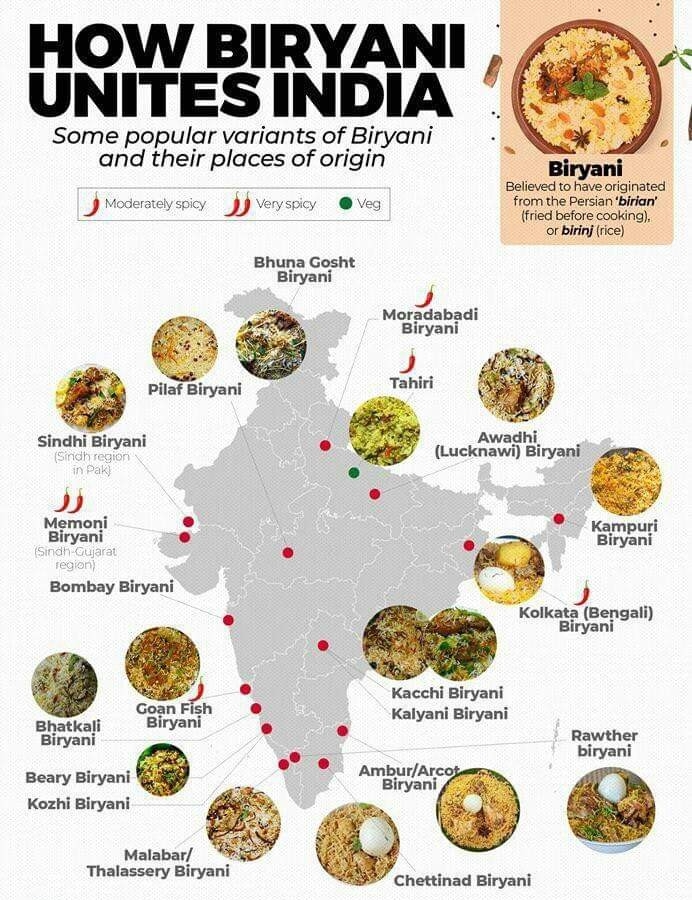Biryani, a flavorful and aromatic rice-based dish, has a rich history in India.
Alternative names
Biriyani, biriani, beriani, briyani, breyani, briani, birani, buriyani, bariania, beriani
Origins
Biryani originated in Persia (modern-day Iran) and was brought to India by Muslim travelers, traders, and rulers.
Mughal Era (1526-1857)
Biryani became popular in India during the Mughal Empire, particularly in the royal courts. The dish was influenced by Persian, Turkish, and Arabic cuisines.
Region or state
India, Pakistan, Bangladesh, Afghanistan, West Asia
Regional Variations
As biryani spread across India, regional flavors and ingredients were incorporated, giving birth to diverse variations:
1. Hyderabadi Biryani (Telangana): Known for its rich, spicy flavor.
2. Lucknowi Biryani (Uttar Pradesh): Famous for its delicate, subtle taste.
3. Kolkata Biryani (West Bengal): Characterized by its egg and potato additions.
4. Sindhi Biryani (Sindh region): Features a unique blend of spices and vegetables.
5. Thalassery Biryani (Kerala): Known for its Malabar-style, beef or seafood variations.
Main Ingredients
1. Basmati rice
2. Aromatics (onions, ginger, garlic)
3. Spices (cumin, coriander, cinnamon, cardamom)
4. Meat or vegetables (chicken, lamb, beef, or eggs)
5. Ghee or oil
Cooking Techniques
1. Dum (steaming) method
2. Layering (alternating rice and meat/vegetables)
3. Handi (earthen pot) cooking
Impact on Indian Cuisine
Biryani has become an integral part of Indian cuisine, with its influence visible in various regional dishes.
Celebrations and Cultural Significance
Biryani is often served at special occasions like weddings, festivals, and social gatherings.
The journey of biryani in India is a testament to the country's cultural diversity and culinary richness.





